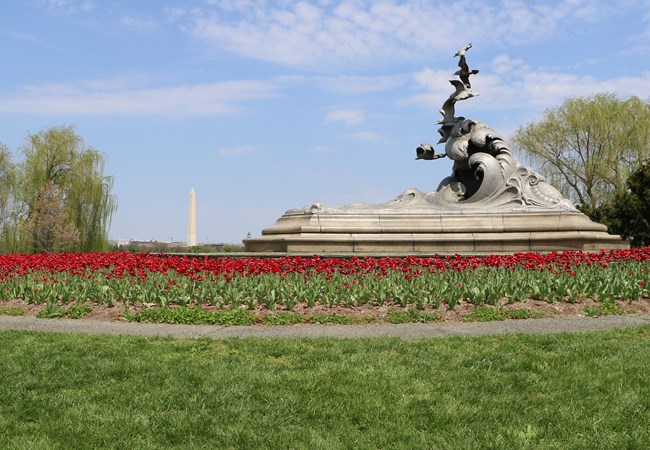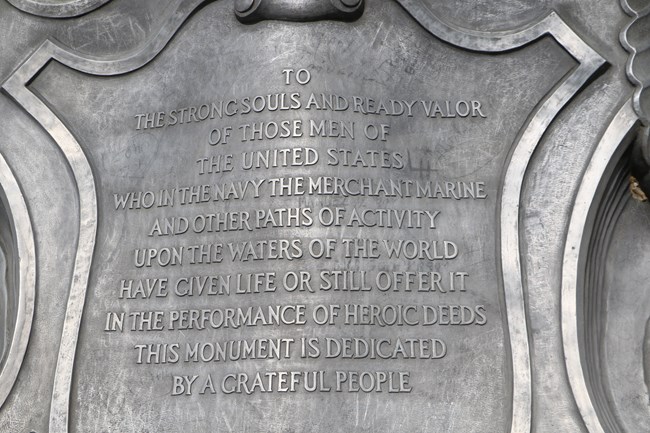
NPS Standing beside the Mount Vernon Trail in Lady Bird Johnson Park is a large sculpture of a crashing wave with seven seagulls flying above. This is the Navy and Marine Memorial, a monument which honors members of the U.S. Navy and Marine Services who lost their lives at sea. It is not solely a war memorial but also a tribute to those who died in storms, shipwrecks, and other maritime disasters while serving their country. Designed by the Italian sculptor Ernesto Begni del Piatta, when it was constructed, it became the first naval memorial in Washington, D.C. The text on the monument was written by New York journalist Royal Cortissoz. It reads:

NPS Though the project had already received federal approval and the wave sculpture had already been cast, one more nearly insurmountable obstacle lay ahead. The bill authorizing the memorial explicitly stated that “the United States shall be put to no expense in or by the erection or maintenance of the said memorial.” However, by 1934, the Navy and Marine Memorial Association still needed $189,634. At the height of the Great Depression, it was unlikely they could refill their empty coffers on their own. Therefore, the association turned to Congress for help. Disappointingly, multiple funding bills failed. The main source of disagreement was whether taxpayer money should be used to pay for an elaborate sea-green granite base for the memorial. The sculptor, Ernesto Begni del Piatto, spent years arguing for it, refusing to take no for an answer. Support for the expensive granite base faded after del Piatto’s 1939 death. One year later, the National Park Service agreed to use $39,000 from the Works Progress Administration’s fund to provide landscaping to finish the memorial instead. It was not what the artist envisioned, but at last, the memorial was complete. |
Last updated: October 11, 2022
